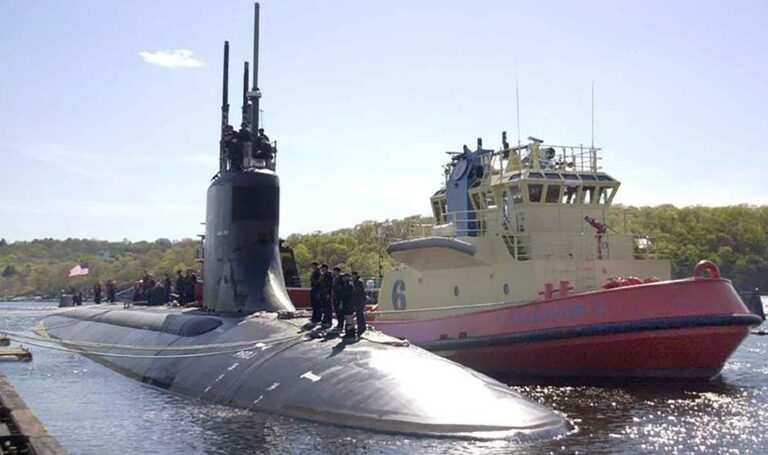
Clothes got laundered, mattresses replaced and pesticides sprayed as the Navy waged war against a stubborn infestation of bedbugs that found their way onto a nuclear-powered submarine at its home port in the Bremerton area.
Navy entomologists now certify that “all feasible measures have been taken” to control the infestation and have recommended “repopulation of berthing,” according to a statement from Cmdr. Cindy Fields, a public affairs officer for the Naval Submarine Forces Pacific.
This campaign aboard the USS Connecticut has included laying down diatomaceous dust to draw insects out of hiding and into contact with this “deadly” countermeasure, according to the statement.
But the Navy’s efforts have not quelled concerns from crew members, some of whom have been sleeping on cots in a pier-side shelter erected as temporary quarters to avoid getting bitten in the submarine “racks” where people sleep.
“They are really frustrated and feel like they have been let down by the Navy,” said Jeffery Rachall, who previously served aboard the submarine and — since leaving military service in 2018 — has remained in close contact with other crew. “They are complaining about a lack of sleep. They itch, and the bugs are crawling all over.”
Bedbugs are oval-shaped insects, about one-quarter inch long when fully grown, that feed on blood from humans and some animals. They can be transported into hotels, homes and boats on people’s clothing, luggage or other personal belongings. They often take up residence in beds, where they may leave small spots that mark their presence. Though bites swell and become itchy, it may take two days or more for them to show up.
It is unclear how the infestation started on the USS Connecticut, but it’s possible it was during a port stop, according to Rachall.
The USS Connecticut is a nuclear-powered, fast-attack submarine launched in 1997 that was transferred to a Washington home port in 2011. It can be used to conduct reconnaissance and protect Navy fleets.
The infestation on the USS Connecticut was spotlighted in a recent article in the Navy Times. It included an interview with an unnamed petty officer who said that the bedbug infestation first became an issue during a deployment in the Arctic Ocean in March 2020, and that the fatigue from bedbugs’ presence has become a safety issue.
“If someone’s sleep-deprived because they’re in the rack getting eaten alive by bedbugs, he could fall asleep (at the controls) and runs us into an underwater mountain,” the petty officer told the Navy Times.
The Navy Times also reported that some petty officers allege that the command is forcing sailors to return to sleeping in the racks this week during training, when the entire sub crew will be on board.
The Navy public affairs officer said that the first reports of bedbugs were not made until December of last year. Initial inspections that month did not detect them. Then, around Feb. 19, the “physical presence of bed bugs” was established, a requirement for the treatment. Daily inspections have occurred since then, with the two Navy entomologists arriving March 4 “to direct hands on efforts,” said the statement from Fields.
“The Navy takes the safety and health of Sailors very seriously,” Fields wrote.
___
(c) 2021 The Seattle Times
Distributed by Tribune Content Agency, LLC.
0 comments :
Post a Comment